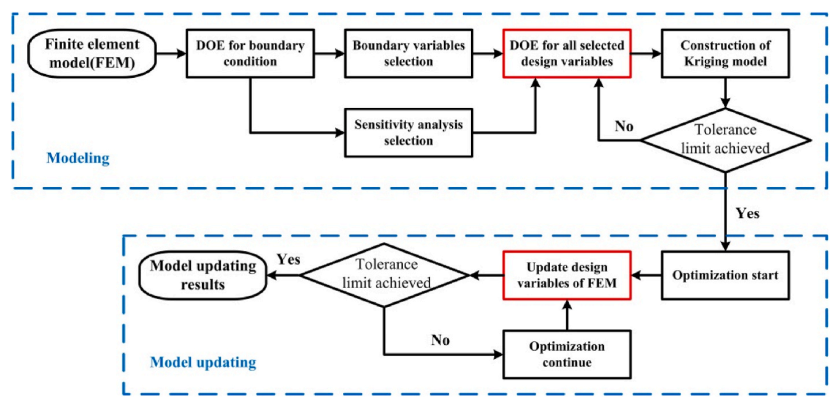Author: CUI Qinglong |
The thermal simulation analysis results are used to predict the temperature distribution of the spacecraft in orbit and guide the thermal design layout. Due to the complexity of aerospace instruments,too many thermal design parameters make it impossible to automatically modify the thermal models. Optimization of thermal simulation models can only rely on experience and trial-and-error method.
Adopting the idea of surrogate model updating, a two-step design of experiment (DOE) is the main testing method of paper. This study was published in International Journal of Thermal Sciences.
First, the sensitivity of the parameters was analyzed and the important parameters were sampled. Then, the Kriging method was used to establish the thermal simulation mathematical model of Solar Spectrometer thermal model. Other sampling points randomly selected from the thermal simulation model confirm the accuracy of the mathematical model.

Fig.1 A two-step DOE
After obtaining the mathematical model of the thermal simulation model, the best combination of thermal design parameters was automatically calculated by Genetic Algorithm (GA). After model updating, the parameters of the thermal analysis model reflected the heat transfer characteristics of the instrument more realisticlly. The thermal balance experimental test data under the two working conditions confirmed that the thermal analysis results were accurate enough.
Under low temperature conditions, the Root Mean Squared Error (RMSE) of the temperature deviation from the experiment before and after updating was 0.88 °C and 3.97°C, respectively. For high temperature conditions, RMSE drooped from 3.55°C to 1.11°C after updating. Moreover, the model updating procedure compensated for the heat leakage of the system, and the temperature distribution was more consistent with the experimental results.
Accurate thermal simulation models can more accurately predict the temperature distribution of aerospace instruments in orbit, which is also the basis for thermal design optimization.
CUI Qinglong
Changchun Institute of Optics, Fine Mechanics and Physics
E-mail: cobalong@163.com
